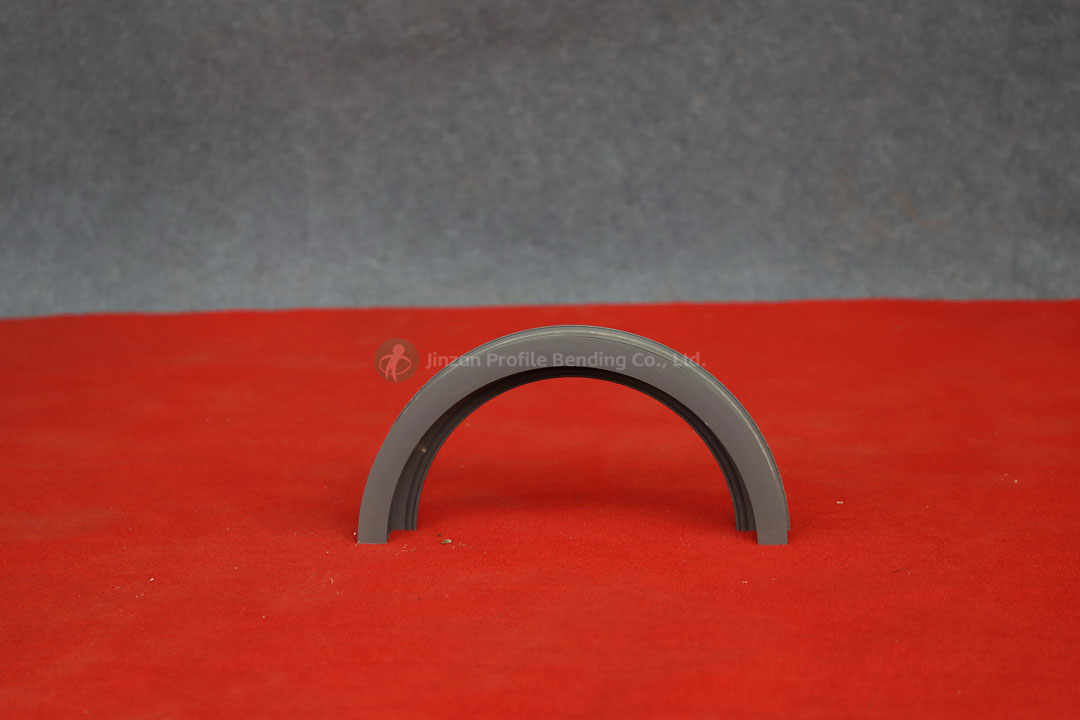Redefining the construction industry with innovative solutions, cuttin-edge technology and sustainable practices
Profile Bending 2025-06-17
In the realm of modern construction, the demand for innovative techniques that enhance structural integrity is ever-increasing. Among these techniques, profile bending has emerged as a critical process, allowing engineers and architects to create strong, durable, and aesthetically pleasing structures.
Profile bending refers to the process of shaping metal or other materials into curved or angular forms, typically using specialized machinery. This technique allows for the creation of complex shapes that are essential for various structural components, such as beams, columns, and frames. The bending process can be applied to a wide range of materials, including steel, aluminum, and composites, making it versatile for different construction needs.
Techniques of Profile Bending
1.Roll Bending
Roll bending is one of the most common methods used in profile bending. It involves passing a metal section through a series of rollers that gradually bend the material into the desired radius. This technique is particularly effective for creating large, uniform curves and is widely used for fabricating beams and structural components in commercial buildings. The precision of roll bending ensures that the final product maintains the necessary structural integrity while achieving the desired aesthetic.
2.Press Bending
In press bending, a hydraulic or mechanical press is used to apply force to a section of material, forcing it into a die that shapes it into a specific curve or angle. This method is ideal for producing tighter bends and more complex profiles. Press bending is often used in the manufacturing of brackets, supports, and other components that require precise angles and a high degree of strength.
3.Hammer Bending
Hammer bending, also known as impact bending, involves the use of a hammer or a similar tool to shape the material. This technique is typically used for smaller sections or when a specific angle is required. Hammer bending allows for a high degree of customization, making it useful for bespoke projects where standard methods may fall short.
4.Heat Bending
Heat bending involves using heat to soften a material, allowing it to be bent more easily without breaking. This technique is especially useful for materials that are prone to cracking or fracturing under stress. Heat bending is commonly employed in applications where a smooth, gradual curve is needed, such as in the creation of custom handrails or decorative features.

Profile bending techniques play a pivotal role in various construction applications:
1.Architectural Features
Curved beams, arches, and other architectural elements can enhance the aesthetic appeal of a structure while also providing necessary support and stability. Profile bending allows architects to realize their creative visions while ensuring that the resulting structures are both beautiful and functional.
2.Structural Supports
In high-rise buildings and large-span structures, profile bending is essential for creating strong supports that can withstand significant loads. Bent steel beams and columns can distribute weight more efficiently, improving the overall strength and stability of the building.
3.Bridges and Infrastructure
Profile bending is also vital in the construction of bridges and other infrastructure projects. Curved steel components are often used in bridge designs to improve load distribution and enhance durability, ultimately leading to safer and more reliable structures.
4.Industrial Applications
In industrial settings, profile bending is used to create various components, including frames for machinery, supports for equipment, and safety barriers. The ability to produce custom shapes ensures that these components meet specific operational requirements while maintaining structural integrity.
The integration of profile bending techniques into modern construction not only allows for innovative designs but also significantly enhances structural integrity. By optimizing the shape and distribution of materials, engineers can:
-Improve Load Distribution: Curved profiles can effectively manage stress and distribute loads more evenly, reducing the risk of structural failure.
-Increase Strength-to-Weight Ratio: Profile bending techniques can produce lighter components without compromising strength, contributing to more efficient and economical designs.
-Enhance Durability: Properly designed bent components can better resist environmental stresses, such as wind and seismic activity, leading to longer-lasting structures.
While profile bending offers numerous benefits, it also presents certain challenges:
1.Material Limitations: Not all materials can withstand the bending process without compromising their integrity. Engineers must carefully select materials that are suitable for bending to ensure optimal performance.
2.Precision and Quality Control: Achieving the desired curvature and maintaining consistency across multiple components can be challenging. Advanced machinery and skilled technicians are essential to ensure high-quality results.
3.Cost Considerations: Depending on the complexity of the design and the materials used, profile bending can be more expensive than traditional straight-cut methods. Budget considerations must be taken into account when planning projects.
Profile bending techniques are indispensable in modern construction, providing solutions that enhance structural integrity while allowing for innovativedesigns. As the construction industry continues to evolve, the importance of adopting advanced bending techniques will only grow. By leveraging these methods, engineers and architects can create structures that are not only visually striking but also robust and resilient against the challenges posed by time and the environment.